People have been fascinated by stars since ancient times. Cultures all over the world repeat myths and stories related to constellations in the sky. Astrologers have studied stars closely, trying to find portents of the future. Stars have guided navigators at sea. It’s not surprising many countries chose to feature a star on their national flag. It is a symbol of hope, guidance, divine blessing, and positive virtues. In this article, we look at national flags that feature a single star and delve into what the symbol means in each culture.

People of all cultures have been fascinated by the mystery and beauty of stars. A star on a flag is often a symbol of hope, guidance, and blessing.
©iStock.com/viennetta
1. Aruba
Aruba is a constituent country of the Netherlands located in the Caribbean Sea near Venezuela. Much of the symbolism of its flag reflects its natural environment. This includes the blue ocean, white sand beaches, mineral wealth, and yellow flowers. But some of the colors have dual meanings. Yellow also stands for the country’s freedom. White represents peace and purity. Red stands for love and sacrifice. And the four-pointed star indicates each of the four directions of the compass. It is a representation of the ethnically diverse Aruban people arriving to the country from all points of the globe.

The red star on the Aruban flag honors the fact that the people of Aruba have come from all over the world.
©Anastasiia Guseva/Shutterstock.com
2. Azerbaijan
Azerbaijan is a country in the Caucasus region neighboring Russia, Armenia, and Iran. Its flag is a horizontal tricolor of light blue, red, and green. The blue represents the Turkish ethnic groups. Red stands for Azerbaijan’s development into a modern state. Green shows the value the country places on its association with the Islamic world. The white crescent and star in the center also are traditional symbols of Islam. The star’s eight points may represent the eight syllables of the word “Azerbaijan” in Arabic. It could also stand for the eight Turkic groups that lived in the region before Soviet times.
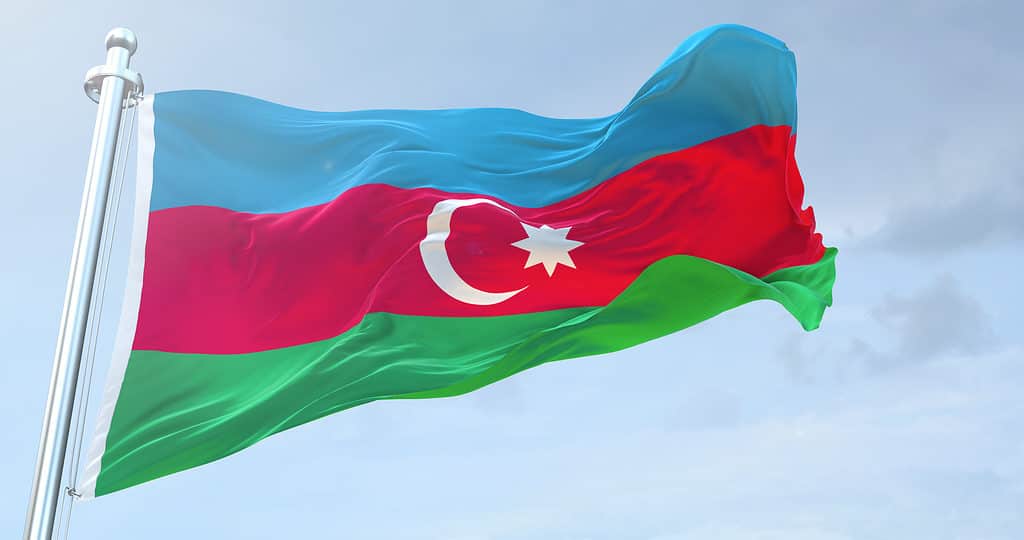
The flag of Azerbaijan honors its ethnicity, religious loyalties, and aspirations of progress.
©iStock.com/EA
3. Burkina Faso
Burkina Faso has a flag similar in design to neighboring Ghana. The flag has two horizontal bands of red and green with a yellow star in the center. Red stands for the bloodshed of the independence struggle. Green represents the country’s vegetation, and the yellow star symbolizes the guiding light of the country’s revolutionary ideals.

The Burkina Faso national flag includes a star representing its revolution.
©Steve Allen/Shutterstock.com
4. Cameroon
The flag of Cameroon is a vertical tricolor of green, red, and yellow with a yellow star in the center. Cameroon is the second African country, after Ethiopia, to adopt these Pan-African colors. Green symbolizes the southern forests of the country and yellow represents the sunny northern savannas. The central red stripe represents unity between these two main regions of the country. The star in this stripe is called the “star of unity.”
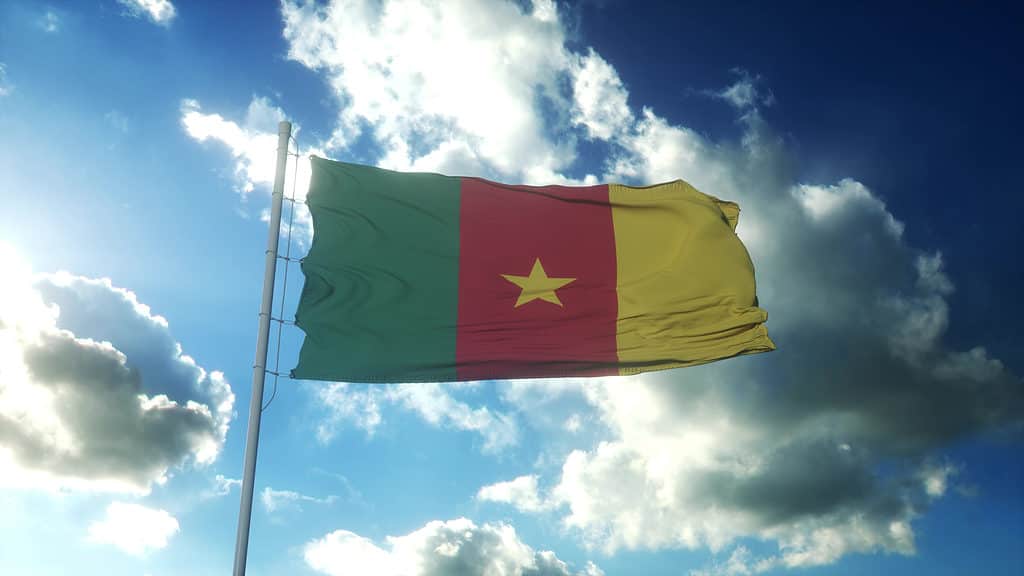
Flag of Cameroon features a “star of unity” between stripes representing the north and south of the country.
©iStock.com/Дмитрий Ларичев
5. Central African Republic
The flag of the Central African Republic consists of four equal horizontal bands of blue, white, green, and yellow. As a former French colony, the CAR combines the colors of the French tricolor flag with the traditional Pan-African colors. The blue band represents the sky and the hope of the people, while the white band represents peace and purity. The green band represents the country’s natural resources and agriculture, and the yellow band represents the country’s minerals. A red stripe unites them all, representing the shared blood of all humanity. The yellow star symbolizes a guide to future progress.

The flag of the Central African Republic combines French and African traditional colors, with a star representing future progress.
©Atlaspix/Shutterstock.com
6. Chile
Chile is a long and narrow country, only 110 miles at its widest but running 2,700 miles long north-to-south. If the northern end were placed at the Great Lakes, the southern tip would reach all the way to Panama! It is located on the Western slopes of the Andes Mountain range, running down to the Pacific coast.
Chile’s flag is quite similar to that of Texas, with two horizontal bands of white and red. A white star is centered on a blue field on the hoist side. The only difference between the two flags is that the Texas flag features the blue field down the entire hoist side, whereas in Chile’s flag, it covers only the hoist top corner, like the U.S. flag. The symbolism of the colors includes blue for the sky, white for the snow of the Andes, and red for bloodshed. And the star? It is a guide to the path of progress and honor.
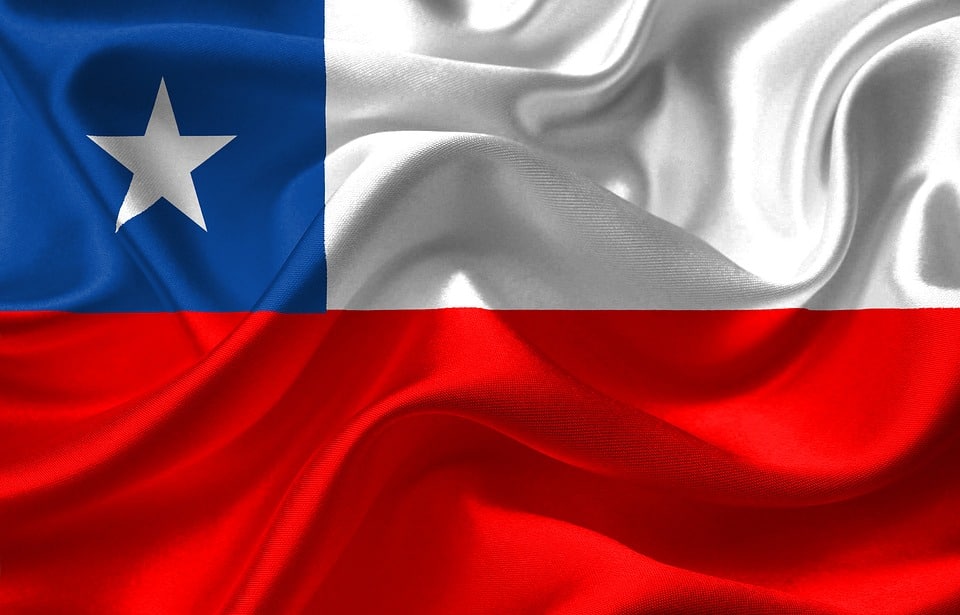
The flag of Chile includes a white star – a guide to the path of progress and honor.
©AUTORES DE GOOGLE CC-BY-SA-4.0 https://commons.wikimedia.org/wiki/Category:CC-BY-SA-4.0 – License
7. Cuba
Cuba has a red, white, and blue flag. The country originally gained its independence from Spain with the help of the United States, so this played an influence on the color choice. In Cuba, these colors represent the blood of the Cuban people that was shed for their independence (red), the purity of their ideals (white), and the original regions Cuba was divided into (blue). The white star represents the country’s independence.
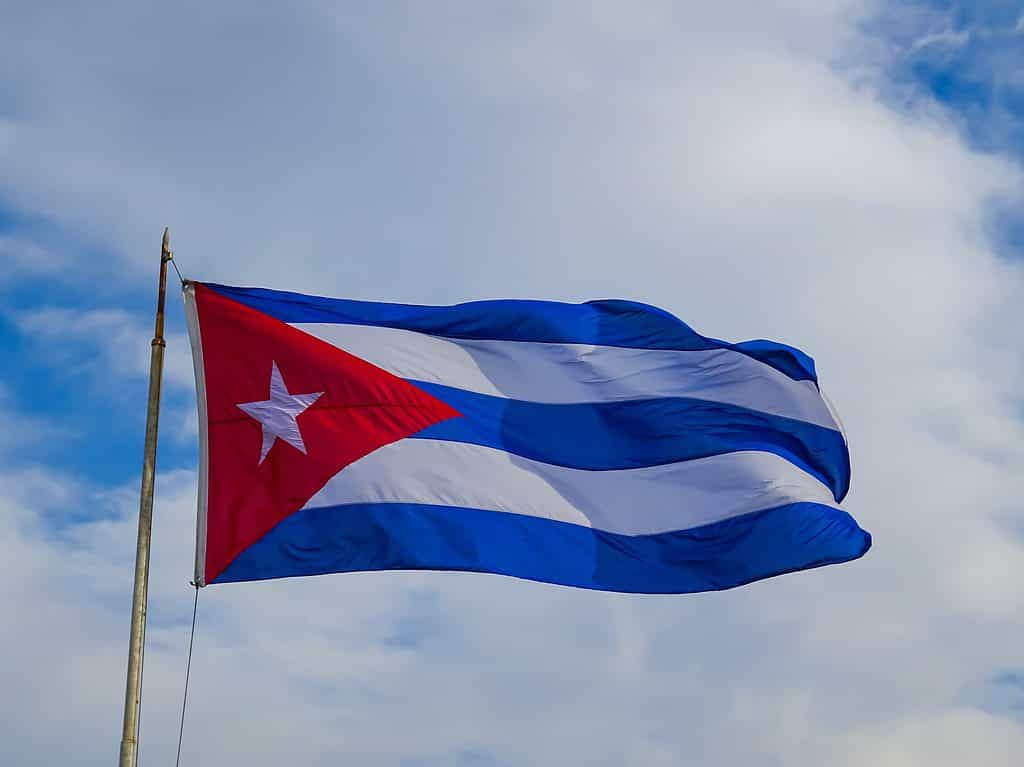
The Cuban flag has American color influences. The white star represents the country’s independence.
©Giongi63/Shutterstock.com
8. Democratic Republic of the Congo
The Democratic Republic of the Congo has a sky blue flag bisected by a diagonal red stripe that is bordered with narrow yellow stripes. A yellow star provides a visual focal point in the top corner of the hoist side. Blue in this flag represents peace. Red represents the martyrs who died for their country. Yellow represents the wealth of this mineral-rich country. Finally, the star is a hopeful harbinger of the country’s future progress.

The Democratic Republic of the Congo features the color yellow to reflect the country’s mineral wealth.
©iStock.com/vistoff
9. Djibouti
Djibouti, a former French colony, is strategically located in East Africa at the mouth of the Red Sea. Although it is a small country, great powers compete for influence there because of its location and port facilities. Djibouti has been an island of stability in a dangerous neighborhood, as neighboring Ethiopia and Somalia have endured decades of civil war. The colors of the flag of Djibouti are green, a symbol of prosperity; light blue, symbolizing the sea and sky; white, standing for peace; and a red star for the martyrs of the country’s freedom, and the unity of its people.

Djibouti’s flag symbolizes peace, prosperity, the natural environment, and the unity and sacrifices of its people.
©M_Videous/Shutterstock.com
10. Ethiopia
Ethiopia is an Orthodox Christian country in a region that has long had a strong Islamic influence. This country also played a significant role in the lead-up to World War II, as Italian fascists took over one of the last uncolonized parts of the African continent. In modern times it has endured famine and civil war that ultimately divided Eritrea from the country as a separate nation. Despite its troubles, Ethiopia’s perseverance has been an inspiration to independence movements across Africa. The flag of Ethiopia has also been inspirational, with many countries of Africa repeating its color scheme of green (development and fertility), yellow (hope, justice, equality), and red (sacrifice). The yellow star in a blue central disc represents unity, peace, and a bright future for Ethiopia’s nationalities.
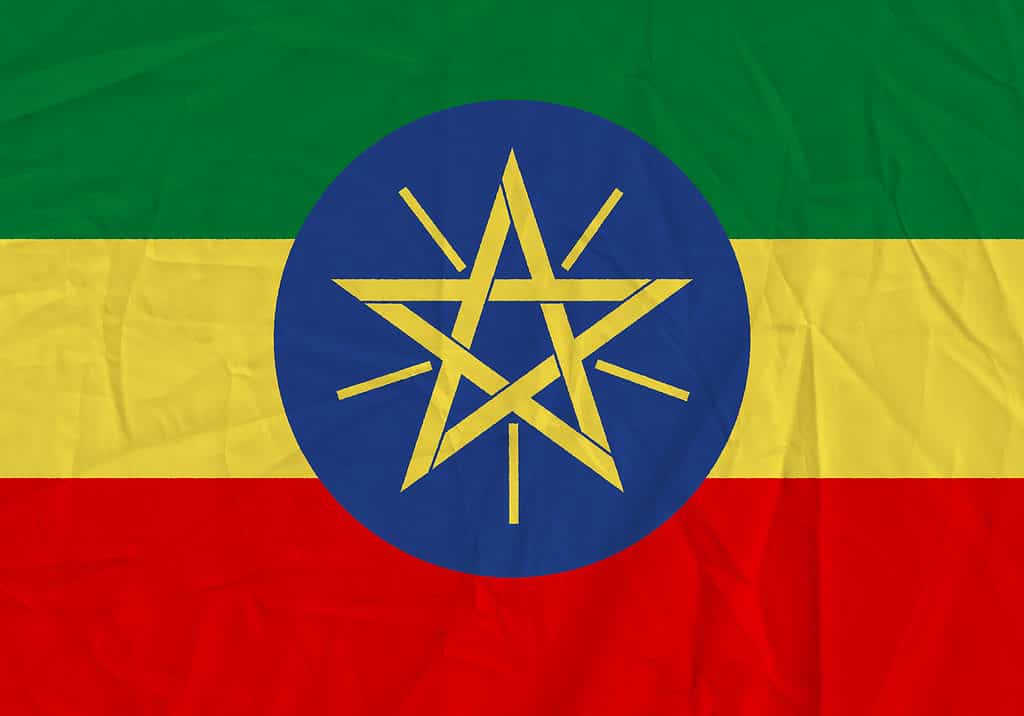
The central star on a blue disc in Ethiopia’s flag represents unity, peace, and a bright future for Ethiopia’s ethnic groups.
©Olleg/Shutterstock.com
11. Ghana
Ghana, located in West Africa, has historically been home to strong African kingdoms that prospered from large gold deposits. In the colonial era, it fell under the sway of the British Empire and was exploited for both its natural resources and human resources in the brutal slave trade. Achieving independence in 1957 was a long-awaited victory for the longsuffering Ghanaian people. The flag of Ghana uses red to honor the blood of the country’s freedom fighters, gold for the country’s mineral deposits, green for its forests, and a black star for African freedom.

The national flag of Ghana as it flies against the backdrop of the sky.
©Design_Bank/Shutterstock.com
12. Guinea-Bissau
Guinea-Bissau is a West African country that was formerly a Portuguese colony. Upon independence, it needed a name to distinguish it from the neighboring country of Guinea, so it chose to append to its name the name of the capital city, Bissau. As this is by far the largest city in the country, its largest port, and its seat of government, industry, finance, and culture, it is a fitting point of identification for the country. In its flag, red stands for the blood of its martyrs, yellow stands for the sun, and green stands for hope. The black star represents Africa.
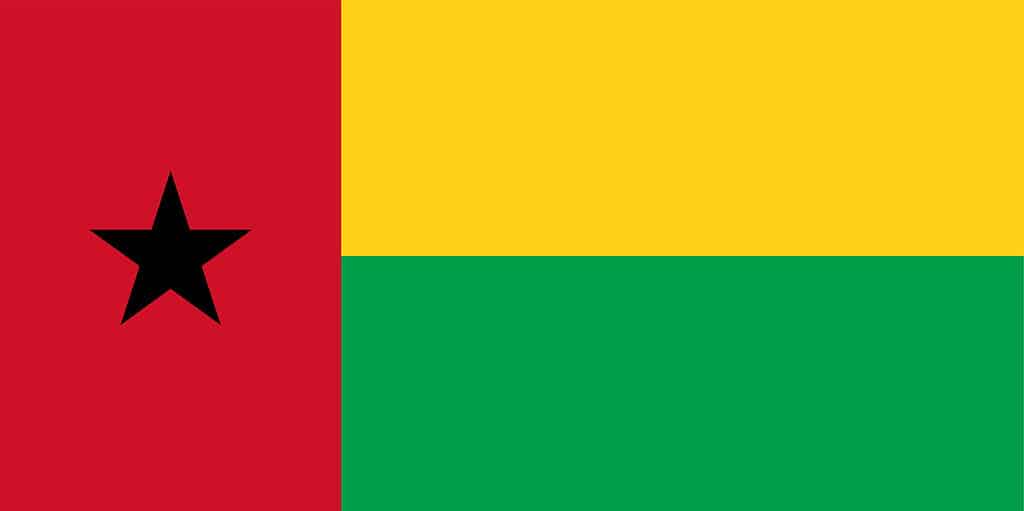
Guinea-Bissau selected a flag with Pan-African colors and a black star representing Africa.
©mapsandphotos/Shutterstock.com
13. Israel
Israel is a remarkably resilient nation that has nearly been annihilated many times in its history but has been able to endure to the present day. After it became a Roman province in AD 6, it disappeared from the map as an independent nation until it was reestablished in 1945. Unfortunately, competing legal and historical claims to the land of Palestine and conflicting promises made by the ruling British Empire to both Arabs and Israelis have resulted in generations of ethnic conflict and war with neighboring countries. The white of Israel’s flag represents God’s glory, purity, and discipline; the blue stripes symbolize the design of a traditional Jewish prayer shawl, and the Star of David in the center (made of overlapping inverted triangles) is a symbol of the Jewish people and Judaism.
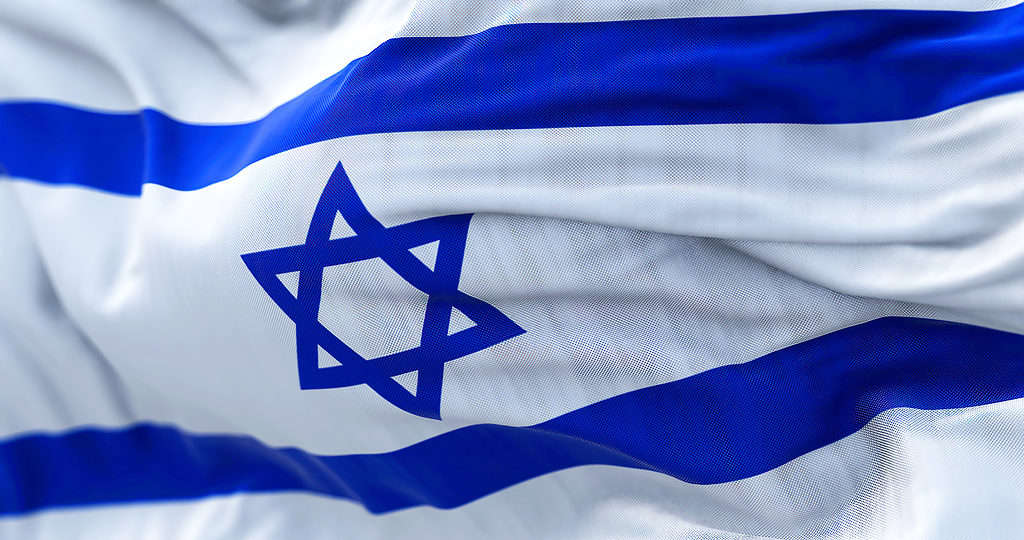
The star of David is made of overlapping inverted triangles. It is a longstanding symbol of the Jewish people and their faith.
©iStock.com/rarrarorro
14. Jordan
Jordan is Israel’s neighbor to the east, across the Jordan River. A large percentage of its population is made up of Palestinians who were displaced from their homes in the consolidation of Israel, so Jordan has been intimately involved in the Arab-Israeli conflict. Jordan is a monarchy and is considered a moderate Arab nation that has been able to make peace with Israel and play a conciliatory role in the region. The black, white, and green stripes of the Jordanian flag represent three historic Islamic-Arab dynasties. The red triangle represents the current ruling Hashimite dynasty and the Arab Revolt against the Ottoman Empire. The white star signifies the unity of the Arab people.

The colors of Jordan’s flag represent various ruling dynasties, and the star represents the unity of the Arab people.
©iStock.com/Burak Ceyhan
15. Liberia
Liberia has a unique history as the only African country that was colonized by the United States. This was part of a movement in the U.S. before the Civil War to repatriate freed African slaves to West Africa. The new country was named after the concept of “liberty,” and its capital, Monrovia, honored U.S. President James Monroe. Over the years, the cultural conflict between the black Americans who moved there with the local indigenous population created great social tensions and led to civil war. The country’s flag has eleven red and white stripes that stand for those who signed the country’s declaration of independence, and the colors red and white symbolize courage and morality. The blue square in the upper hoist-side quadrant stands for the continent of Africa, and the single star within it represents Liberia as the first independent republic on the continent.

The single star reflected Liberia’s pride in being the first independent republic in Africa.
©rarrarorro/Shutterstock.com
16. Libya
Libya is a large country on the Mediterranean coast of North Africa, south of Italy. Italy ruled it as a colony until the end of World War II. In more recent history, Libya was under the rule of the notorious dictator Muammar Gaddafi. After he was overthrown and killed in a violent revolution, Libya descended into a civil war that has left the country divided into regional factions to this day. In Libya’s flag, red represents the blood that was shed or the nation’s freedom. The color black is a symbol of the dark days when the region was occupied by Italy. Green is a representation of wealth, prosperity, and the nation’s agriculture. The crescent moon and star are traditional Islamic symbols.
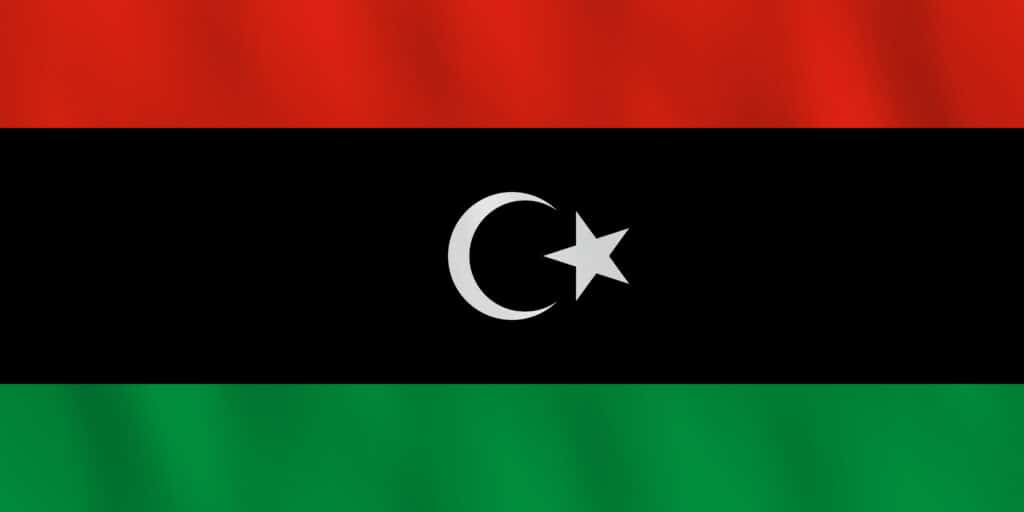
The flag of Libya includes a crescent moon and star – traditional Islamic symbols.
©BOLDG/Shutterstock.com
17. Malaysia
Malaysia is a former British colony in Southeast Asia that is divided into two main parts: the southern end of the Malay Peninsula, and the northern coast of the island of Borneo. Its flag has a close resemblance to that of the United States, but this is said to be accidental, as the flag was modeled after that of the British East India Company. Red, white, and blue are reminiscent of the colors of the British flag and represent Malaysia as a country belonging to the Commonwealth. The crescent and star represent Malaysia’s predominant Islamic faith, and yellow symbolizes the sovereignty of the Malay Rulers and their roles as leaders of the faith in the country.
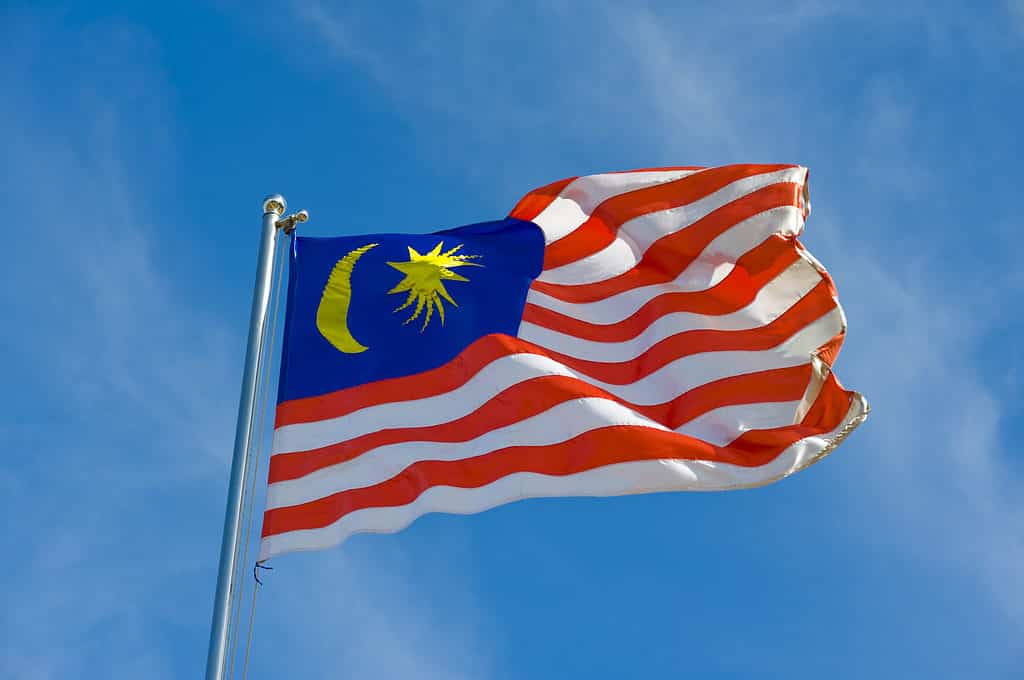
Flag of Malaysia resembles that of the United States, but this is said to be coincidental.
©iStock.com/macky_ch
18. Marshall Islands
The Marshall Islands is an island nation of coral atolls in the Pacific Ocean, with 1,225 islands made up of 160 species of coral. It is one of the newest countries in the world, having been independent just since 1986. The blue background of the flag represents the ocean; the orange and white stripes together represent the equator; and the star represents the country itself, located just north of the equator.
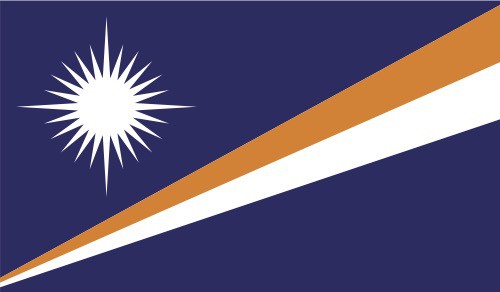
The Marshall Islands is located just north of the equator.
©iStock.com/MekongAnimated
19. Mauritania
Mauritania is a West African country with much of its territory covered by the Sahara desert, yet is also has incredibly diverse wildlife. It’s one of the best places in Africa to see birds as they migrate between Europe and Africa. The flag of Mauritania features the colors red, green, and yellow – the Pan-African colors. They represent, respectively: the sacrifices of its people, the color of Islam, and the sands of the Sahara. The crescent and star are symbols of Islam, which is Mauritania’s state religion.
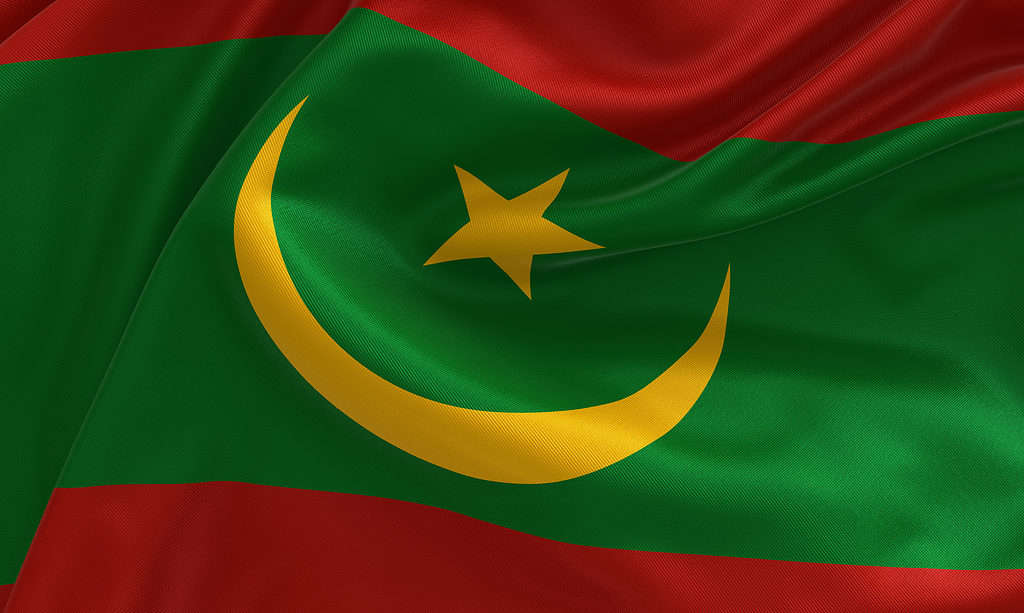
Mauritania’s flag features Pan-African colors and Islamic symbolism.
©iStock.com/Nabil Kamara
20. Morocco
Morocco is a country at the northwest extremity of Africa, across the Strait of Gibraltar from Spain. Culturally, it is a fascinating blend of North African, Islamic, and European influences. It is a popular and exotic vacation spot for people from all over the world, but particularly for European vacationers seeking sun, sand, good food, and a friendly welcome.
Morocco’s flag is a green pentagram on a red background. The simplicity of the design belies significant meanings. Red is said to represent “closure” and green “opening” – thus, the flag suggests Morocco’s opening to the world. Red is also a color associated with historic ruling dynasties of Islamic civilization. As a monarchy, the Moroccan flag uses a royal color. Green is a color associated with Islam. For a civilization that began in the deserts of Arabia, the color green suggests a refreshing oasis in the desert. Morocco’s guidelines for flag colors specifically say the green star is to be “palm green,” further underscoring this connection. The pentagram, a linear 5-pointed star, is called the “Seal of Solomon” and has significance in Islamic and Jewish mysticism. On Morocco’s flag, the five points of the star are also said to refer to the Five Pillars of Islam, the religion’s core devotional practices.
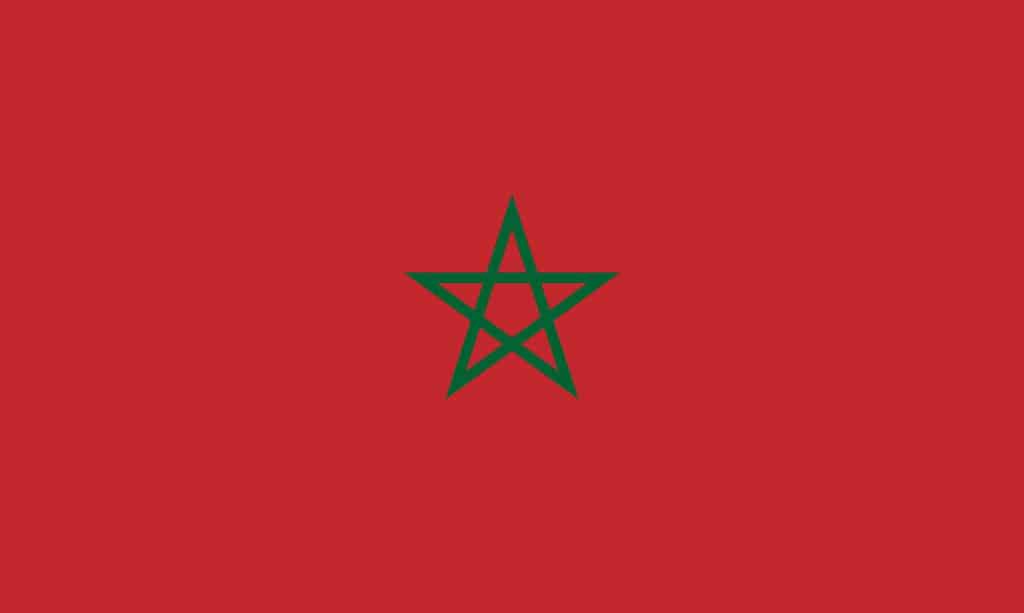
The 5-pointed star in the Moroccan flag is called the Seal of Solomon, a mystical symbol.
©iStock.com/VanReeel
21. Mozambique
Mozambique is a southeast African country on the Indian Ocean coast of the continent that was formerly a Portuguese colony. Its flag is a tricolor of teal, black, and yellow with a red triangle on the hoist side. Teal stands for the riches of the land; the narrow white lines signify peace; black represents the African continent; yellow symbolizes the country’s mineral wealth; and red represents the struggle for independence. Within the red triangle are complex superimposed symbols: a yellow star, a book, and a crossed firearm and hoe. The rifle stands for defense and vigilance, the open book symbolizes the importance of education, the hoe represents the country’s agriculture, and the star symbolizes the spirit of the international solidarity of the Mozambican people.
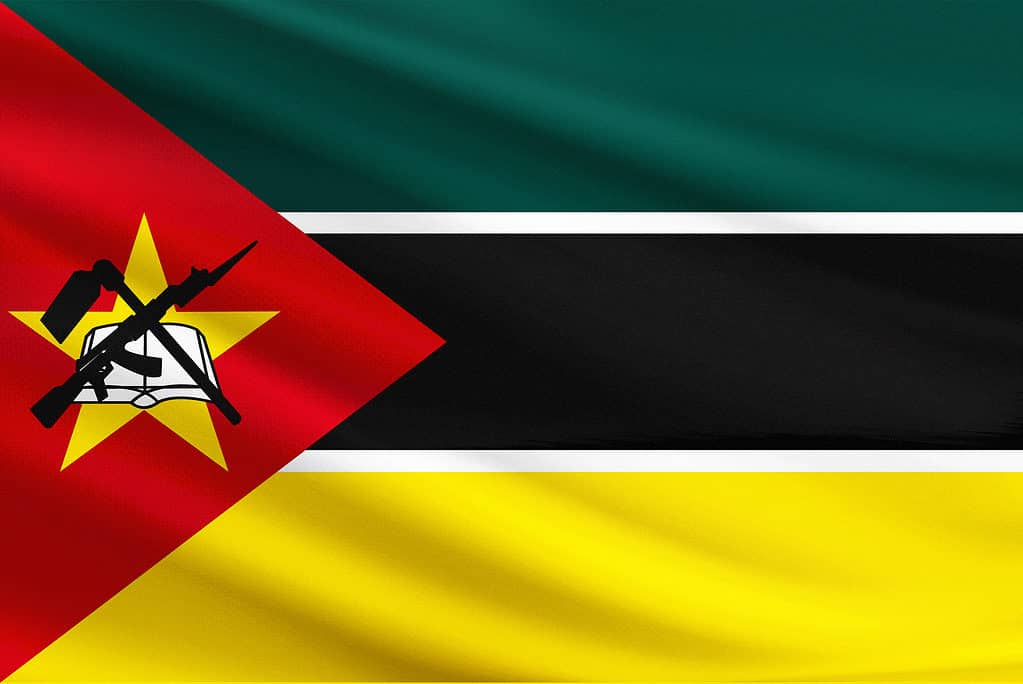
The flag of Mozambique is the only one in the world that features a modern firearm.
©Osman Bugra Nuvasil/Shutterstock.com
22. Myanmar
Myanmar is a Southeast Asian nation of more than 100 ethnic groups, bordering India, Bangladesh, China, Laos, and Thailand. It was formerly a British colony and for many years was named Burma. In 2004 the country constructed a new capital, named Naypyidaw, and the government began operating from there the following year. Today its population has grown to over 400,000, aided by the fact that the government prioritized providing uninterrupted electricity to the new city. Myanmar’s flag consists of three equal horizontal bands of yellow, green, and red, with a five-pointed white star in the center of the green band. Yellow is for the country’s resources; green represents its natural beauty; and red represents the struggles of the people. The white star stands for purity, honesty, and compassion.

Myanmar’s flag includes a white start representing purity, honesty, and compassion.
©Design_Bank/Shutterstock.com
23. Nauru
Nauru is a small island nation located northeast of Australia in the Pacific Ocean. It’s the third smallest nation in the world and was once quite wealthy because of phosphate mining. However, the mines were tapped in the 1990s, leaving huge ecological damage and a lack of jobs. There has been talk of relocating the island’s entire population of 12,500 people to another island. Nauru is the least-visited country in the world, receiving only 200 tourists a year. In fact, in the entire world, only 15,000 people can say they have visited. In its flag, the navy blue of its flag symbolizes the ocean. The yellow line across the middle of the flag represents the equator. The star on the flag has twelve points that represent the twelve tribes of the people of the island.
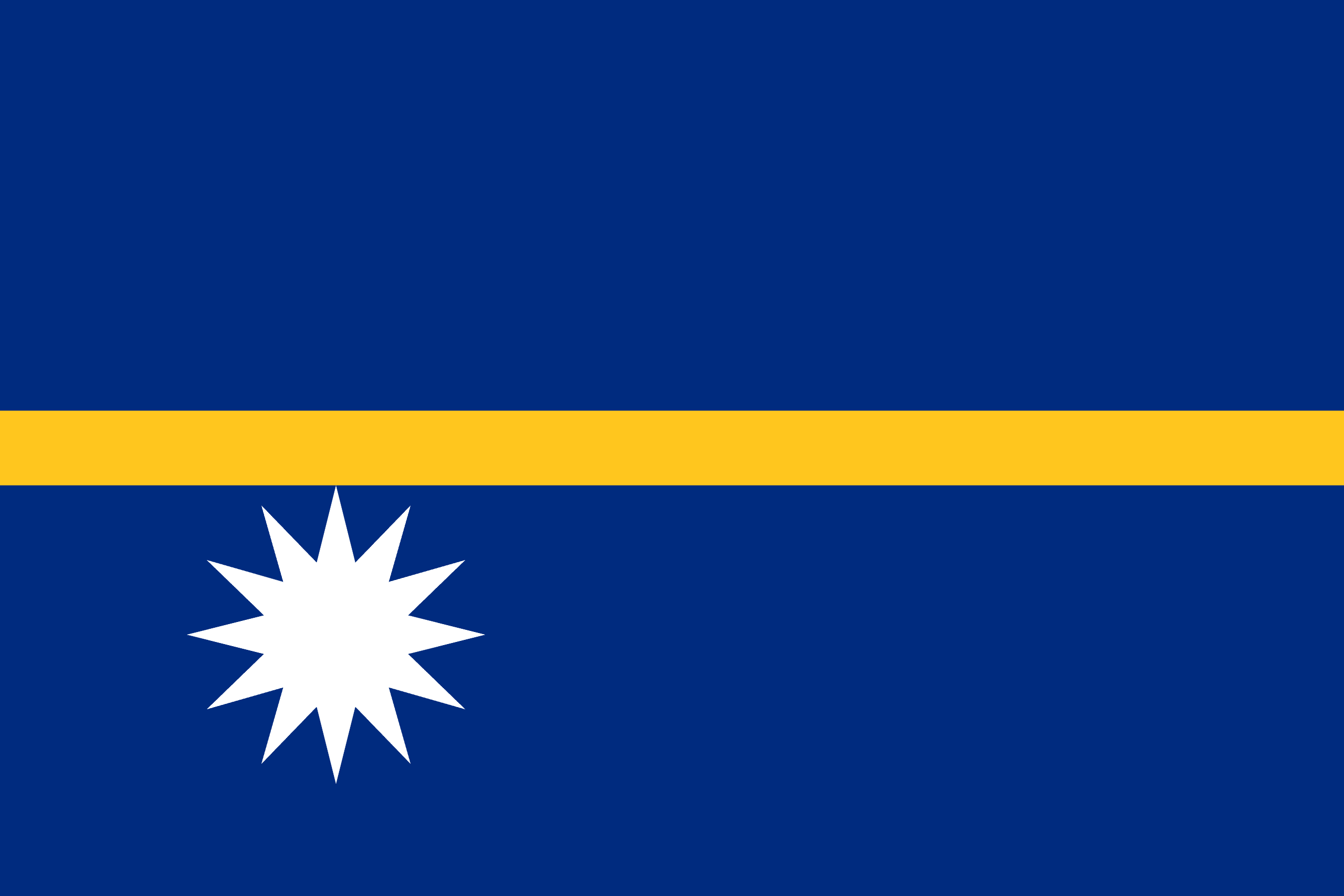
The star on the flag of Nauru has twelve points that represent the twelve tribes of the people of the island.
©https://upload.wikimedia.org/wikipedia/commons/1/14/Flag_of_Nauru_%283-2%29.svg – License
24. North Korea
North Korea is a communist country that takes up the northern half of the Korean peninsula. It borders Russia, China, and South Korea. After failing in an attempt to take over the whole peninsula by force in the 1950s, North Korea closed itself off from the world and built an army of over one million soldiers. Today, the country engages in a growing nuclear weapons program. The flag of North Korea features a red star in a white disc representing the ruling communist party. The blue bands on the flag stand for sovereignty, peace, and friendship, and the red band honors the country’s revolutionary ideals and commitment to the reunification of Korea.

The flag of North Korea has the same colors as the American flag, though the country is not a democracy.
©Naypong Studio/Shutterstock.com
25. Pakistan
Pakistan was part of the British colony of India until it transitioned into its own country when the British withdrew in 1947. It was a homeland for the Muslims of the subcontinent, while India was the home of the Hindus. Dividing the country created huge hardships and bloodshed as people tried to get to the side of the border they wanted to live on. India and Pakistan are still working today on finding ways to live as peaceable neighbors. Pakistan’s flag is green with a white vertical bar on the hoist side and a white star and crescent in the center. White stands for peace, and green stands for prosperity. The color green and the crescent and star symbols are both popular representations of Islamic culture.
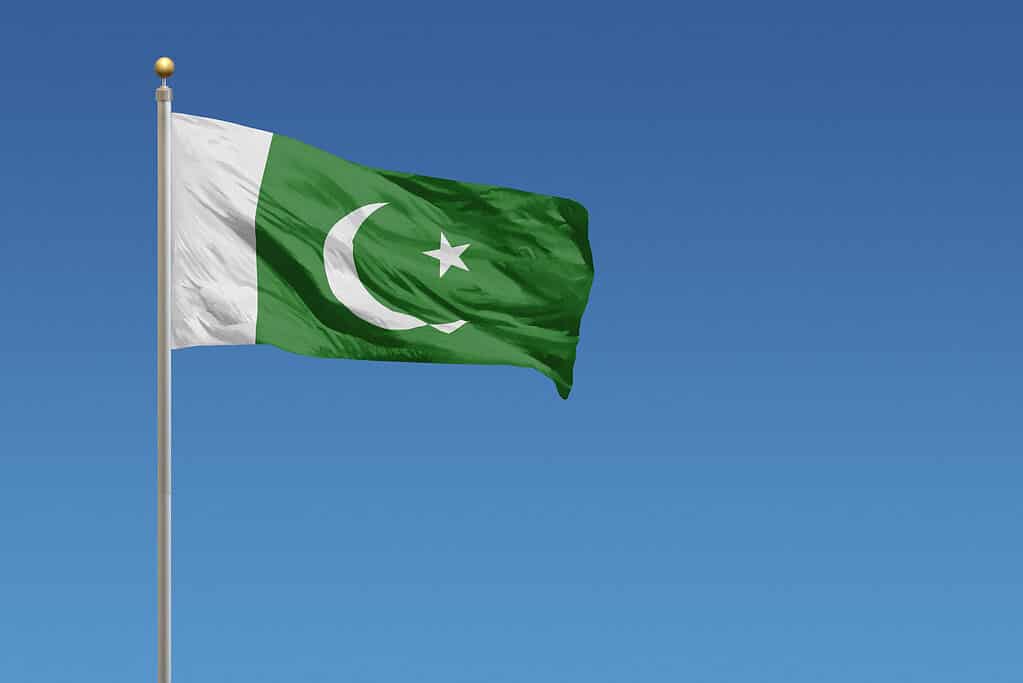
The flag of Pakistan uses the color green and the star and crescent symbols to showcase its connection with Islamic civilization.
©iStock.com/Derek Brumby
26. Paraguay
Paraguay is a landlocked South American country that is unique in that most of its people are bilingual, speaking both Guaraní and Spanish. An interesting thing about the Guaraní language is that many of its words imitate the natural sounds of animals and other things in the environment. The flag of Paraguay uses the popular red, white, and blue tricolor design found in several national flags of the world, including many in Latin America. The French flag inspired the colors and design. In Paraguay, they represent the country’s red sunsets, white frothing rivers and waterfalls, and blue skies and the Paraguay River. The symbol in the center of the flag, including a yellow five-pointed star, is the coat of arms of Paraguay.
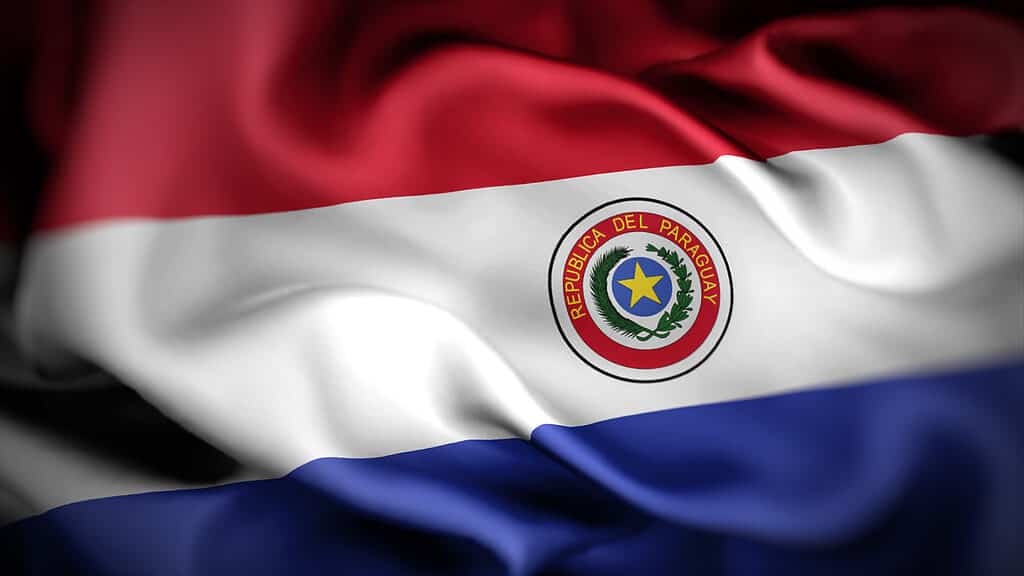
The yellow star at the center of the flag of Paraguay is part of the country’s coat of arms.
©Tatohra/Shutterstock.com
27. Puerto Rico
Puerto Rico is a Caribbean island that is not an independent country, but a partially self-governing Commonwealth of the United States that became a U.S. territory after the Spanish-American War. There are movements in Puerto Rico toward both independence and statehood but thus far neither has gained enough popular political support to achieve momentum. Puerto Rico has its own flag that is identical in design to the Cuban flag, but with the blue and red colors reversed. The red bands of the flag stand for the country’s heroes. The white bands represent liberty and peace. The blue triangle represents the sky and the ocean, and the white star represents Puerto Rico itself.

The white star on Puerto Rico’s flag represents the island itself, located in a blue field representing the sea.
©Artgraphixel/Shutterstock.com
28. Senegal
The flag of Senegal, a west African country, is a vertical tricolor using the Pan-African colors of green, yellow, and red. The colors symbolize the green forests of the country, its gold and other mineral wealth; and its independence struggle. The green five-pointed star is a symbol of freedom – a popular African design element.
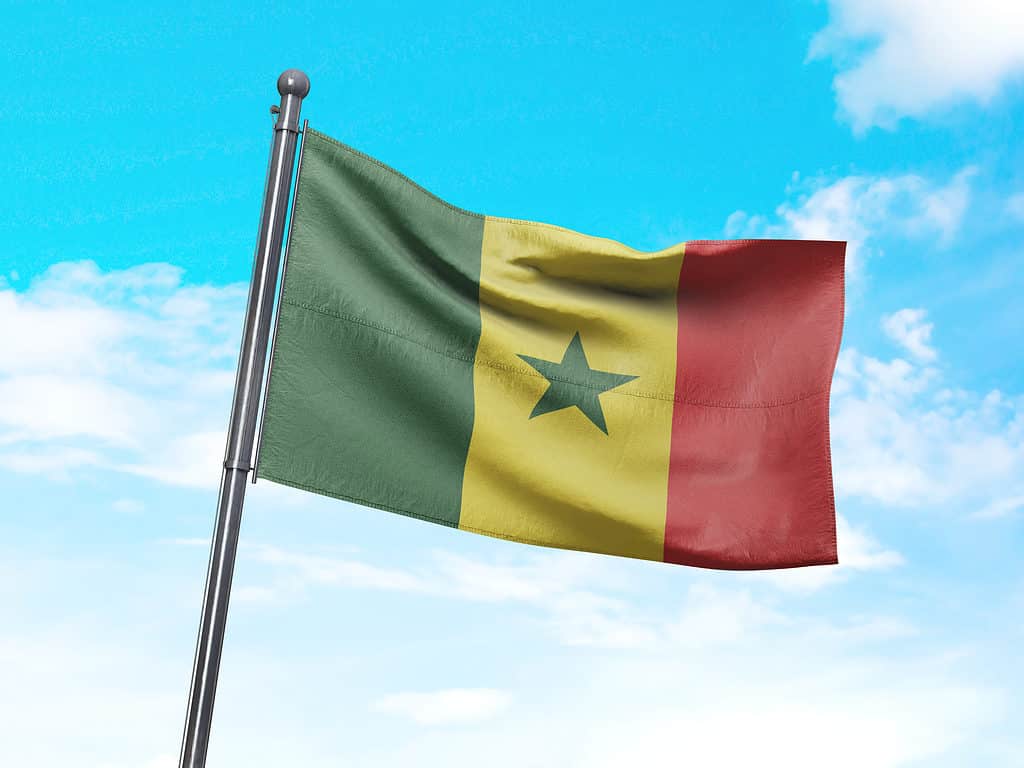
The colors and design of the Senegalese flag are popular Pan-African symbols.
©Hybrid Gfx/Shutterstock.com
29. Somalia
Somalia is an East African country located on the Horn of Africa. The independent country unites two former European colonies: Italian and British Somaliland. The country’s flag is mainly light blue, representing the sky and the Indian Ocean. The white star represents peace and the five regions of the country.
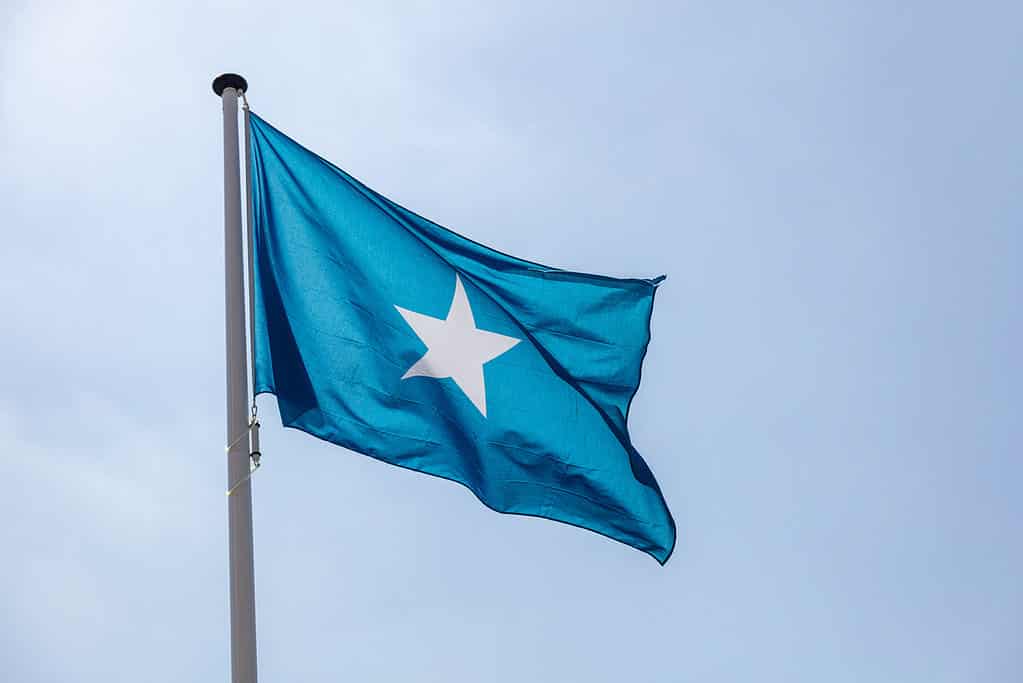
The flag of Somalia represents the blue sky and ocean with a star standing for peace between the five regions of the country.
©iStock.com/Rawf8
30. South Sudan
After a half-century of civil war, the east African nation of South Sudan became independent in 2011. This resulted in a division between a mostly Islamic country to the north (Sudan) and a mostly Christian country to the south (South Sudan). South Sudan has a lot of natural resources but is still in the process of organizing itself to take care of all the social problems of its people after so many years of conflict. These are the colors of its flag and their symbolic meanings:
- Black: the African people
- Red: the blood spilled for independence
- Green: agricultural prosperity and progress
- White: peace
- Blue: the Nile river
- Yellow: a star of unity, hope and determination

The yellow star of South Sudan’s flag represents unity, hope, and determination.
©iStock.com/Primada
31. Suriname
Suriname, a former Dutch colony on the north coast of South America, has a flag of green, white, red, and yellow. The green stripes draw attention to the country’s forests and resources. White represents peace and honesty. Red symbolizes progress and love. The yellow star stands for unity and a bright, golden future for the country.
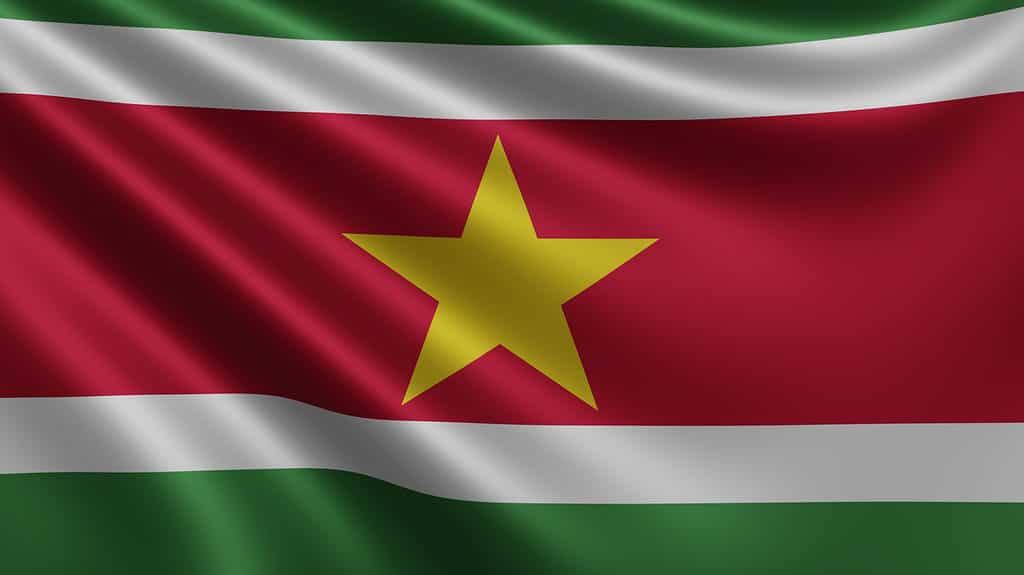
Suriname’s yellow star stands for unity and a bright, golden future.
©iStock.com/IFest
32. Timor-Leste
Timor-Leste is a Southeast Asian country on the east half of the island of Timor, with the west half belonging to Indonesia. It was long known as East Timor when it was a colony of Portugal. However, it became independent of Portugal in 1975 but was occupied by Indonesia. It finally achieved full independence in 2002. Timor-Leste is surrounded by ecologically fragile coral reefs full of marine life. The country’s flag has a black triangle representing colonial repression, and larger yellow background triangle representing the independence struggle, and a red field standing for the sufferings of the people. The white star is an emblem of the country’s future hope.

The flag of Timor-Leste mainly looks to the country’s long struggle for freedom, but its white star points toward a hopeful future.
©Craftsmanship/Shutterstock.com
33. Togo
The flag of Togo, a West African country, includes bands of green and yellow representing the forests and natural resources of the country. There are five of them, honoring each separate region of Togo. The red field on the upper hoist-side stands for the citizen’s loyalty to their country, while the white star is emblematic of life, purity, and independence. A single five-point star is a popular symbol on many African flags. An interesting fact about the culture of Togo is that Voodoo – a religion of combined Christian and African beliefs and practices – is popular there.
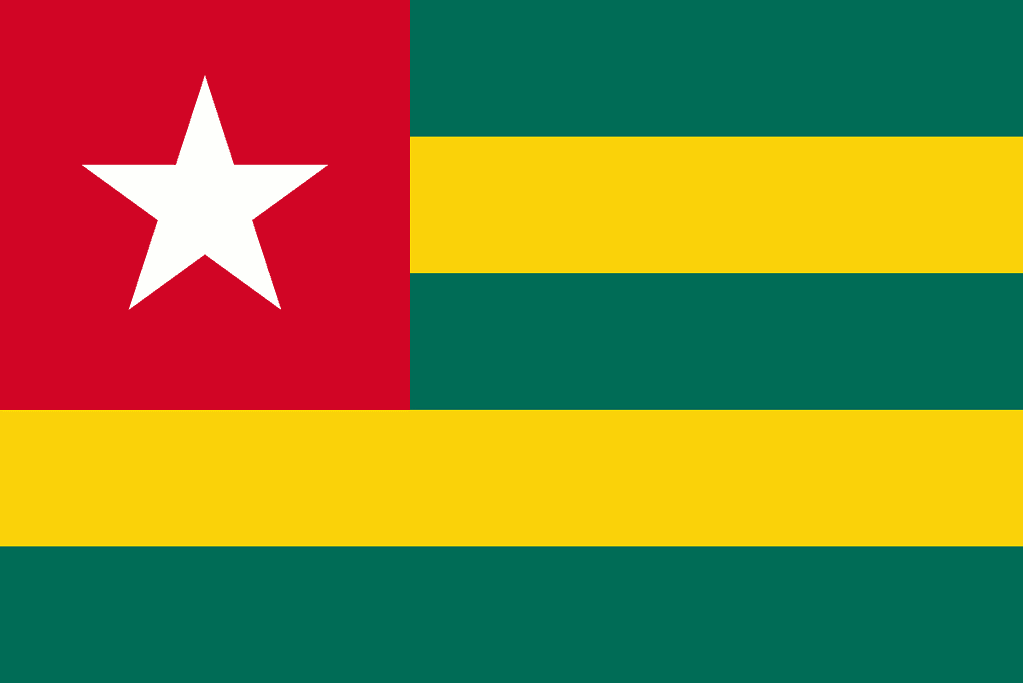
Togo’s flag includes a white star representing life, purity, and independence.
©SKopp | CC BY-SA – License
34. Turkey
The official name of Turkey is the Republic of Türkiye. It occupies a unique position at the crossroads of Southeastern Europe and Western Asia. Turkey was formerly the center of the Ottoman Empire, which at its height ruled the whole Balkan peninsula, most of the Middle East, and the Mediterranean coast of North Africa. The Ottoman Empire’s gradual collapse completed after its defeat in World War I, when Turkey emerged among many other nation-states from the wreckage of the empire. Turkey’s flag design is based on a modified Ottoman Flag. It allegedly represents the reflection of a moon and star in a pool of blood during the significant Battle of Kosovo. The crescent and star are popular symbols of Islam.

The Turkish flag is said to symbolize the reflection of an Islamic crescent and star in a pool of blood from a fateful battle.
©iStock.com/ronniechua
35. Vietnam
Vietnam is a Southeast Asian country that was a part of the colony of French Indochina until World War II. After this time, the colony was occupied by the Japanese. After the war, Laos, Cambodia, and Vietnam achieved independence. However, Vietnam split between a communist north and a western-aligned South Vietnam. Civil war raged between the two sides and involved the United States and other western countries in the 1960s. This conflict ultimately ended in the reunification of the country under communist rule in the 1970s. The Vietnamese flag is a simple red field representing the communist revolution and the blood of those who died. The gold star, a popular communist symbol, represents unity between the country’s five social classes. These are peasants, workers, academics, young people, and soldiers.
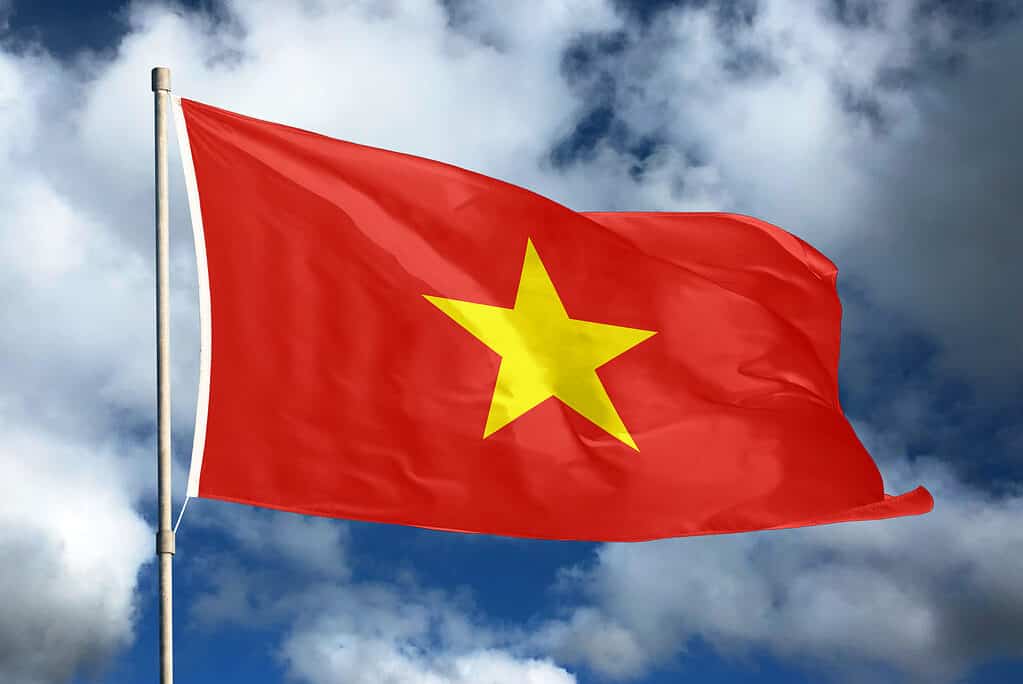
The Vietnam flag features a yellow star representing solidarity between five segments of Vietnamese society.
©Tatohra/Shutterstock.com
36. Zimbabwe
Zimbabwe is a southern African country that has ancient historical roots in an African kingdom called Great Zimbabwe. The flag of today’s country includes an image of an archaeological find. This takes the form of a soapstone bird that has become a symbol of the country’s long history. Behind it is a red star symbolizing the country’s revolutionary struggle. The colors of the flag represent the land (green); mineral wealth (yellow), people’s ethnicity (black), and the blood that was shed for freedom (red).

Zimbabwe
‘s flag honors the country’s ancient history and its modern revolutionary struggle.
©Aleksandar Mijatovic/Shutterstock.com
More Flags With One Star in 2024
Tunisia
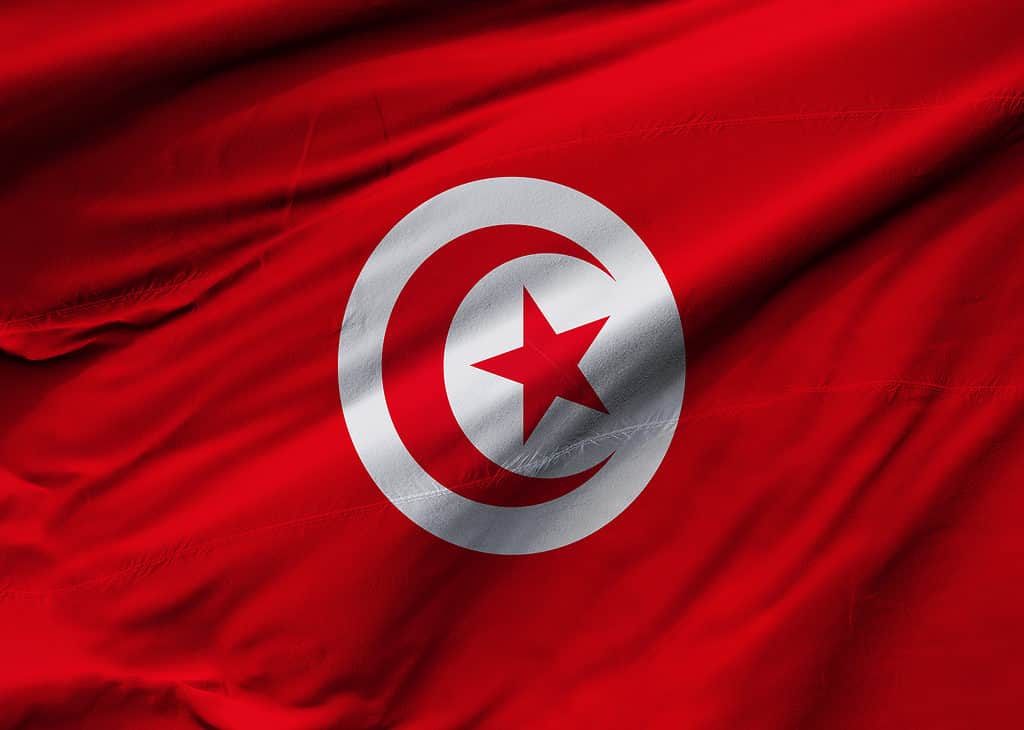
Republic of Tunisia flag blowing in the wind.
©MaciejForyszewski/Shutterstock.com
The African country of Tunisia has a flag whose five-pointed star stands as a symbol of the Five Pillars of Islam, which represent the fundamental principles that all Muslims uphold.
Each of the Five Pillars has a unique meaning:
- Pillar One – A Faith Testimony. This is the belief that only God is worthy of worship.
- Pillar Two – Prayer. This denotes Muslims who offer five prayers daily.
- Pillar Three – Supporting the Needy. A specific portion is given to those in need.
- Pillar Four – the Ramadan Fasting Period. This represents the month of Ramadan when Muslims fast from sunup to sundown.
- Pillar Five – the Annual Pilgrimage to Makkah. Muslims travel to Makkah for the annual pilgrimage in the 12th month of the Islamic calendar.
The photo featured at the top of this post is © iStock.com/husayno
Thank you for reading! Have some feedback for us? Contact the AZ Animals editorial team.







